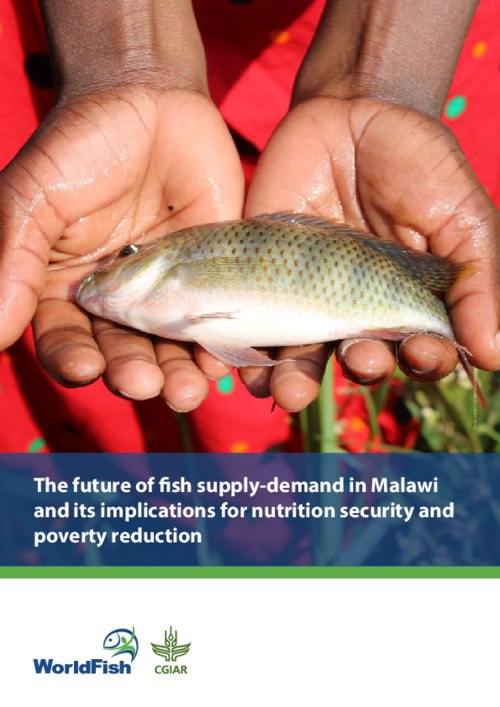The future of fish supply-demand in Malawi and its implications for nutrition security and poverty reduction

Fish plays an important dietary and economic role in Malawi, providing 28% of animal protein intake. Per
capita fish consumption increased from 10.7 kg in 2016 to about 12.6 kg in 2018. The contribution of fish to
Malawi’s gross domestic product (GDP) is about 4%. In 2020, aquaculture supplied around 9400 t against
almost 171,100 t from capture fisheries (FAO 2022). In response to the increase in domestic fish demand,
Malawi imported more than 5000 t of fish in 2019 (FAO 2020a). Despite the high potential of capture
fisheries and high level of aquaculture development and training, Malawi still lags behind other countries,
such as Egypt, where 80% of fish production comes from aquaculture (FAO 2022). Malawi’s aquaculture
production remains relatively low, accounting only for 5.2% of total national fish production (FAO 2022).
Understanding the dynamics of fish production, consumption, trade, prices and their implications on food
and nutrition security in Malawi is critical to supporting national policy and decision-making to ensure the
growth of sustained fish production while minimizing unexpected socioeconomic and environmental
impacts. The objective of this study was to provide a future outlook of the fish sector in Malawi by
projecting the dynamics of fish supply and demand and drawing policy implications that can be of interest
to policymakers in the country.
Permalink
Date Available
Type
Publisher
Countries
Copyright
CC-BY-NC-4.0
Topics
Language